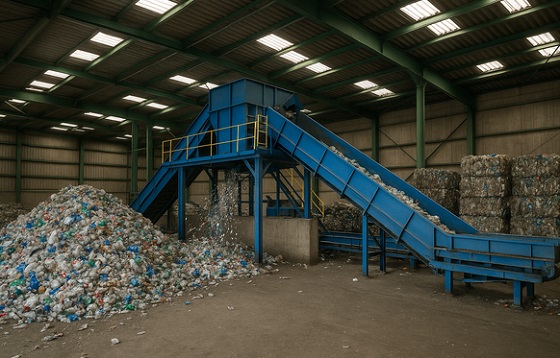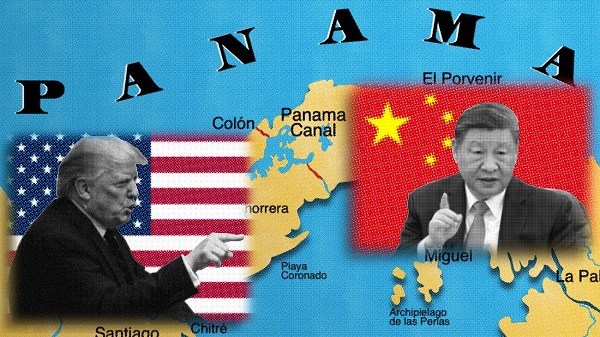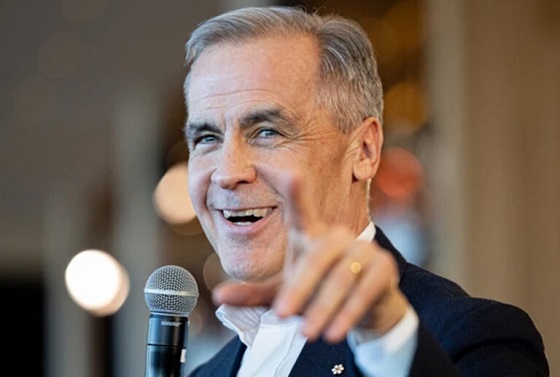Business
Trump’s trade war and what it means for Canada

From the Fraser Institute
We didn’t want it but it has crashed onto our shores anyway. U.S. President Donald Trump has unleashed his long-mooted assault on Canada, deploying tariffs as his chosen weapon of “economic coercion.” The Executive Order justifying 25 per cent across-the-board tariffs on southbound Canadian exports (10 per cent on exports of energy and critical minerals) cites American concerns over cross-border drug shipments. Yet that can hardly be the real reason for Trump’s unprecedented action. Canada is at most a tiny part of America’s festering problem of widespread illegal drug use. The notion that these punitive tariffs are mainly about compelling Canada to clamp down on fentanyl production is far-fetched.
It is obvious that this most unconventional of American presidents has other aims in mind. One may be to impose steep tariffs on all or most imports entering his country as a means to raise money for the cash-strapped U.S. treasury. A second may be to suck industrial production and capital out of Canada and other trading partners, to support the MAGA movement’s objective of rebuilding American manufacturing. In his remarks delivered (virtually) to the good and the great assembled at the World Economic Forum’s shindig in Davos in January, President Trump put much emphasis on this latter point. Or perhaps what the new U.S. administration most wants is to convince Canada (and other trading partners) to align with American policies to de-couple from and slow the economic and military ascent of China.
If some or all of these are indeed Mr. Trump’s most important goals, it will be difficult for Canada to negotiate our way out of the bilateral trade war. As hard as it may be to imagine, Trump’s tariffs–with the possibility of even higher levies and various other trade restrictions still to come–could be the new “normal” for Canada, at least for the duration of his presidency. For the moment, the trilateral Canada-U.S.-Mexico trade agreement is either dead or at best barely clinging to life.
As the tariff war gets underway, it is useful to look at the composition of Canada-U.S. trade. Most of it involves cross-border trade in “intermediate inputs,” not finished goods or final products (see the accompanying table). More than three-fifths of Canada’s U.S.-bound exports consist of energy, building materials, agri-food products, other raw materials, and other items used to produce final goods. Similarly, over half of all U.S. goods shipped to Canada are also made up of intermediate inputs. Capital goods (e.g., machinery and equipment) represent 16 to 23 per cent of bilateral merchandise trade. Final goods constitute between a fifth and a quarter of the total. This underscores the highly integrated nature of North American supply chains–and the significant disruptions that two-way tariffs will cause for many industries operating on both sides of the border.
| Composition of Canada-U.S. Merchandise Trade, 2023 (% of total exports) | ||
|---|---|---|
| Canadian exports to the U.S. | U.S. exports to Canada | |
| Final goods | 21% | 25% |
| Capital goods* | 16% | 23% |
| Intermediate inputs | 63% | 52% |
*e.g., machinery and equipment
Source: Canadian Chamber of Commerce, Data Lab.
Looking ahead, it’s clear our economy is about to suffer, as Canadian industries, workers and communities absorb the biggest external shock in a century (apart from during the initial phases of the COVID pandemic). To see why, recall that the U.S. buys more than three-quarters of Canada’s international exports, with the value of our U.S.-destined shipments amounting to about one-fifth of Canada’s GDP.
According to projections published by the Bank of Canada, 25 per cent U.S. tariffs coupled with Canadian retaliatory tariffs will reduce the level of Canadian real GDP by at least 3 per cent over 2025-26–this represents a permanent output loss, meaning it is national income we will never recoup. Business fixed non-residential investment falls by 12 per cent, with exports dropping by nine per cent. Unemployment rises significantly and job creation downshifts. Consumer spending also weakens–in part because retaliatory Canadian tariffs raise the cost of many consumer goods, thus leading to a temporary bump in Canadian inflation. All of these estimates are measured relative to a counterfactual baseline scenario of no U.S. and Canadian tariffs. The U.S. economy will also take a hit from President Trump’s tariffs, notably through higher inflation, increased business uncertainty, and the costs of rejigging the supply chains of American companies that rely significantly on raw materials, other inputs and consumer goods supplied by Canada and Mexico.
How should Canada respond to the American tariffs? An initial priority is to determine if there is a pathway to a negotiated settlement–not a simple task, as the Americans have yet to specify what it would take to make peace. A second option is to hit back. Canada has already announced a schedule for retaliatory tariffs, covering some $155 billion of goods imported from the United States; all of these are slated to be in place by the end of March. While the political impulse and pressure to respond in kind is understandable, retaliation will magnify the economic damage to Canada from the U.S. tariffs. Finding a way to end the conflict–if that is possible–is far superior to a series of tit-for-tat bilateral tariffs.
Some politicians and media commentators have talked up “trade diversification” as an option for Canada. Reduced reliance on the U.S. would likely deliver benefits in the long-term, but it won’t help us in 2025/26. Despite entering into 15 trade agreements with 51 nations (other than the U.S.), Canada has seen virtually no export market diversification in the last two decades. There has been modest diversification on the import side of the trade ledger, mainly due to the growing importance of China and other Asian emerging markets as suppliers of final goods and some intermediate inputs. But the U.S. remains the source of more than half of Canada’s imports of goods and services combined. Moreover, “gravity models” of international trade confirm that Canada’s dense, extensive web of trade and other commercial ties with the United States makes perfect economic sense given the advantages of geographic proximity, a common language, and similar business practices between the two countries.
The Trump administration’s self-chosen trade war is a watershed moment for Canadian foreign and commercial policy. The shock from this U.S. action will persist, even if the tariffs are in place for only a few months. Treating an ally as an enemy is an abnormal practice in the history of Western diplomacy. But with Donald Trump at the helm, the past is no longer a reliable guide to understanding or forecasting American policy.
Business
Ottawa’s Plastics Registry A Waste Of Time And Money

From the Frontier Centre for Public Policy
By Lee Harding
Lee Harding warns that Ottawa’s new Federal Plastics Registry (FPR) may be the most intrusive, bureaucratic burden yet. Targeting everything from electronics to fishing gear, the FPR requires businesses to track and report every gram of plastic they use, sell, or dispose of—even if plastic is incidental to their operations. Harding argues this isn’t about waste; it’s about control. And with phase one due in 2025, companies are already overwhelmed by confusion, cost, and compliance.
Businesses face sweeping reporting demands under the new Federal Plastics Registry
Canadian businesses already dealing with inflation, labour shortages and tariff uncertainties now face a new challenge courtesy of their own federal government: the Federal Plastics Registry (FPR). Manufacturers are probably using a different F-word than “federal” to describe it.
The registry is part of Ottawa’s push to monitor and eventually reduce plastic waste by collecting detailed data from companies that make, use or dispose of plastics.
Ottawa didn’t need new legislation to impose this. On Dec. 30, 2023, the federal government issued a notice of intent to create the registry under the 1999 Canadian Environmental Protection Act. A final notice followed on April 20, 2024.
According to the FPR website, companies, including resin manufacturers, plastic producers and service providers, must report annually to Environment Canada. Required disclosures include the quantity and types of plastics they manufacture, import and place on the market. They must also report how much plastic is collected and diverted, reused, repaired, remanufactured, refurbished, recycled, turned into chemicals, composted, incinerated or sent to landfill.
It ties into Canada’s larger Zero Plastic Waste agenda, a strategy to eliminate plastic waste by 2030.
Even more troubling is the breadth of plastic subcategories affected: electronic and electrical equipment, tires, vehicles, construction materials, agricultural and fishing gear, clothing, carpets and disposable items. In practice, this means that even businesses whose core products aren’t plastic—like farmers, retailers or construction firms—could be swept into the reporting requirements.
Plastics are in nearly everything, and now businesses must report everything about them, regardless of whether plastic is central to their business or incidental.
The FPR website says the goal is to collect “meaningful and standardized data, from across the country, on the flow of plastic from production to its end-of-life management.” That information will “inform and measure performance… of various measures that are part of Canada’s zero plastic waste agenda.” Its stated purpose is to “keep plastics in the economy and out of the environment.”
But here’s the problem: the government’s zero plastic waste goal is an illusion. It would require every plastic item to last forever or never exist in the first place, leaving businesses with an impossible task: stay profitable while meeting these demands.
To help navigate the maze, international consultancy Reclay StewardEdge recently held a webinar for Canadian companies. The discussion was revealing.
Reclay lead consultant Maanik Bagai said the FPR is without precedent. “It really surpasses whatever we have seen so far across the world. I would say it is unprecedented in nature. And obviously this is really going to be tricky,” he said.
Mike Cuma, Reclay’s senior manager of marketing and communications, added that the government’s online compliance instructions aren’t particularly helpful.
“There’s a really, really long list of kind of how to do it. It’s not particularly user-friendly in our experience,” Cuma said. “If you still have questions, if it still seems confusing, perhaps complex, we agree with you. That’s normal, I think, at this point—even just on the basic stuff of what needs to be reported, where, when, why. Don’t worry, you’re not alone in that feeling at all.”
The first reporting deadline, for 2024 data, is Sept. 29, 2025. Cuma warned that businesses should “start now”—and some “should maybe have started a couple months ago.”
Whether companies manage this in-house or outsource to consultants, they will incur significant costs in both time and money. September marks the first phase of four, with each future stage becoming more extensive and restrictive.
Plastics are petroleum products—and like oil and gas, they’re being demonized. The FPR looks less like environmental stewardship and more like an attempt to regulate and monitor a vast swath of the economy.
A worse possibility? That it’s a test run for a broader agenda—top-down oversight of every product from cradle to grave.
While seemingly unrelated, the FPR and other global initiatives reflect a growing trend toward comprehensive monitoring of products from creation to disposal.
This isn’t speculation. A May 2021 article on the World Economic Forum (WEF) website spotlighted a New York-based start-up, Eon, which created a platform to track fashion items through their life cycles. Called Connected Products, the platform gives each fashion item a digital birth certificate detailing when and where it was made, and from what. It then links to a digital twin and a digital passport that follows the product through use, reuse and disposal.
The goal, according to WEF, is to reduce textile waste and production, and thereby cut water usage. But the underlying principle—surveillance in the name of sustainability—has a much broader application.
Free markets and free people build prosperity, but some elites won’t leave us alone. They envision a future where everything is tracked, regulated and justified by the supposed need to “save the planet.”
So what if plastic eventually returns to the earth it came from? Its disposability is its virtue. And while we’re at it, let’s bury the Federal Plastics Registry and its misguided mandates with it—permanently.
Lee Harding is a research associate for the Frontier Centre for Public Policy.
Business
Trump demands free passage for American ships through Panama, Suez

 MxM News
MxM News
Quick Hit:
President Donald Trump is pushing for U.S. ships to transit the Panama and Suez canals without paying tolls, arguing the waterways would not exist without America.
Key Details:
-
In a Saturday Truth Social post, Trump said, “American Ships, both Military and Commercial, should be allowed to travel, free of charge, through the Panama and Suez Canals! Those Canals would not exist without the United States of America.”
-
Trump directed Secretary of State Marco Rubio to “immediately take care of, and memorialize” the issue, signaling a potential new diplomatic initiative with Panama and Egypt.
-
The Panama Canal generated about $3.3 billion in toll revenue in fiscal 2023, while the Suez Canal posted a record $9.4 billion. U.S. vessels account for roughly 70% of Panama Canal traffic, according to government figures.
Diving Deeper:
President Donald Trump is pressing for American ships to receive free passage through two of the world’s most critical shipping lanes—the Panama and Suez canals—a move he argues would recognize the United States’ historic role in making both waterways possible. In a post shared Saturday on Truth Social, Trump wrote, “American Ships, both Military and Commercial, should be allowed to travel, free of charge, through the Panama and Suez Canals! Those Canals would not exist without the United States of America.”
— Rapid Response 47 (@RapidResponse47) April 26, 2025
Trump added that he has instructed Secretary of State Marco Rubio to “immediately take care of, and memorialize” the situation. His comments, first reported by FactSet, come as U.S. companies face rising shipping costs, with tolls for major vessels ranging from $200,000 to over $500,000 per Panama Canal crossing, based on canal authority schedules.
The Suez Canal, operated by Egypt, reportedly saw record revenues of $9.4 billion in 2023, largely driven by American and European shipping amid ongoing Red Sea instability. After a surge in attacks by Houthi militants on commercial ships earlier this year, Trump authorized a sustained military campaign targeting missile and drone sites in northern Yemen. The Pentagon said the strikes were part of an effort to “permanently restore freedom of navigation” for global shipping near the Suez Canal.
Trump has framed the military operations as part of a broader strategy to counter Iranian-backed destabilization efforts across the Middle East.
Meanwhile, in Central America, Trump’s administration is working to counter Chinese influence near the Panama Canal. On April 9th, Defense Secretary Pete Hegseth announced an expanded partnership with Panama to bolster canal security, including a memorandum of understanding allowing U.S. warships and support vessels to move “first and free” through the canal. “The Panama Canal is key terrain that must be secured by Panama, with America, and not China,” Hegseth emphasized during a press conference in Panama City.
American commercial shipping has long depended on the canal, which reduces the shipping route between the U.S. East Coast and Asia by nearly 8,000 miles. About 40% of all U.S. container traffic uses the Panama Canal annually, according to the U.S. Maritime Administration.
The United States originally constructed and controlled the Panama Canal following a monumental effort championed by President Theodore Roosevelt in the early 20th century. After backing Panama’s independence from Colombia in 1903, the U.S. secured the rights to build and operate the canal, which opened in 1914. Although U.S. control ended in 1999 under the Torrijos-Carter Treaties, the canal remains vital to U.S. trade.
-

 2025 Federal Election2 days ago
2025 Federal Election2 days agoThe Federal Brief That Should Sink Carney
-

 2025 Federal Election2 days ago
2025 Federal Election2 days agoHow Canada’s Mainstream Media Lost the Public Trust
-

 Media1 day ago
Media1 day agoCBC retracts false claims about residential schools after accusing Rebel News of ‘misinformation’
-

 John Stossel2 days ago
John Stossel2 days agoClimate Change Myths Part 2: Wildfires, Drought, Rising Sea Level, and Coral Reefs
-

 Bjorn Lomborg1 day ago
Bjorn Lomborg1 day agoNet zero’s cost-benefit ratio is CRAZY high
-

 2025 Federal Election1 day ago
2025 Federal Election1 day agoMark Carney Wants You to Forget He Clearly Opposes the Development and Export of Canada’s Natural Resources
-

 2025 Federal Election1 day ago
2025 Federal Election1 day agoPolice Associations Endorse Conservatives. Poilievre Will Shut Down Tent Cities
-

 2025 Federal Election23 hours ago
2025 Federal Election23 hours agoCarney’s Hidden Climate Finance Agenda


